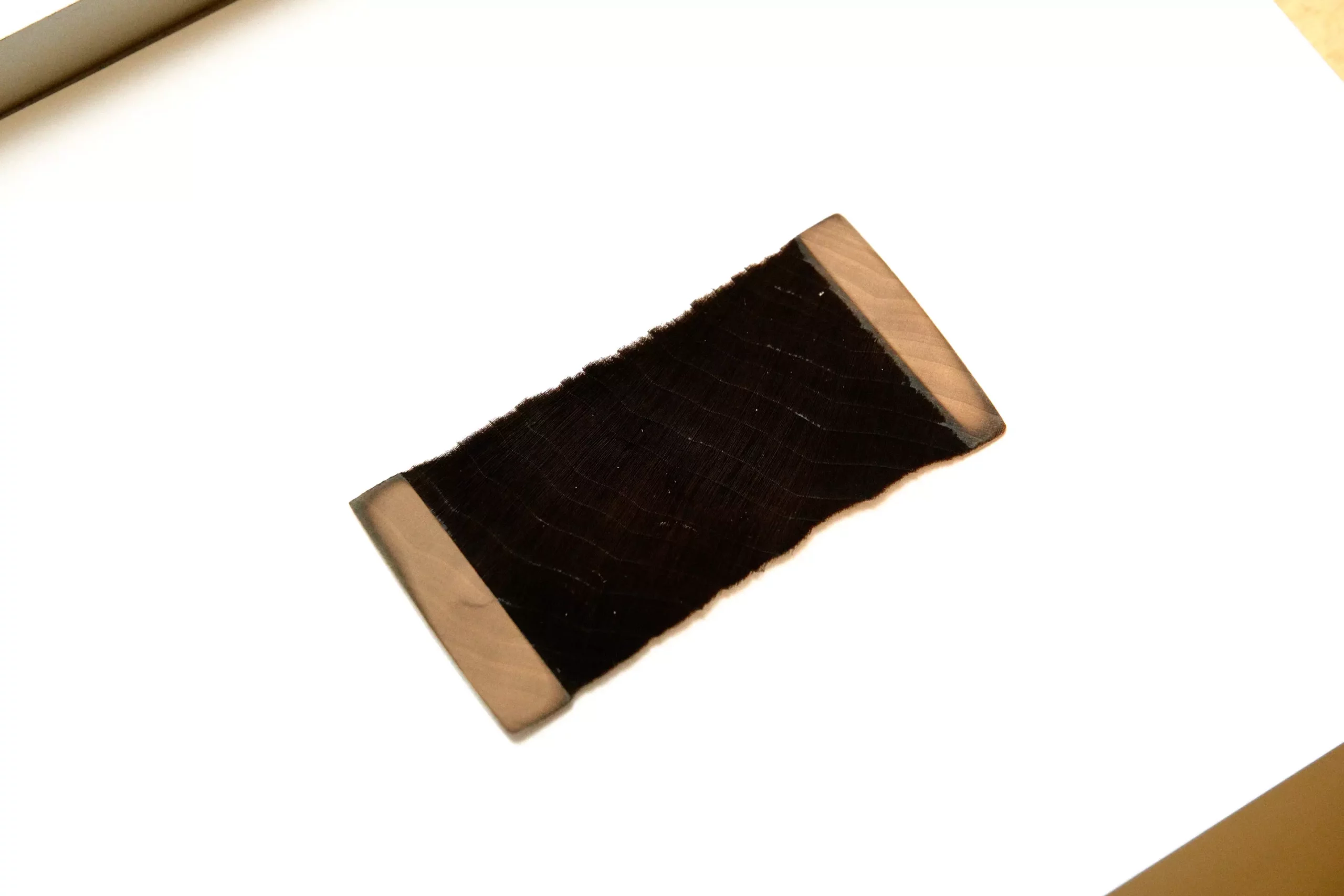In the realm of scientific discovery, some of the most groundbreaking innovations emerge from unexpected circumstances. Researchers at the University of British Columbia (UBC) recently made a remarkable discovery that serves as a testament to the unpredictability of research. Initially engaged in a project aimed at enhancing the water-resistance of wood through high-energy plasma treatments, Professor Philip Evans and Ph.D. student Kenny Cheng stumbled upon a material that absorbed nearly all light. Their serendipitous finding has sparked excitement across various fields, with potential applications ranging from fine jewelry to advanced solar cells and precision optical devices.
The creation of their newly dubbed super-black material, Nxylon, constitutes a significant advancement in the field of material science. By applying plasma technology to wood cells, the UBC team created surfaces that reflect less than 1% of visible light. This innovative property makes Nxylon an attractive alternative to conventional black materials, which generally absorb around 97.5% of light. This leap in blackness can be pivotal in fields such as astronomy, where reducing stray light is crucial to enhance image clarity.
Dr. Evans emphasizes the importance of ultra-black materials, stating, “Super-black material can absorb more than 99% of the light that strikes it.” This efficiency not only contributes to improved optical performance but may significantly enhance the effectiveness of solar cells by maximizing light absorption.
One of the defining features of Nxylon is its persistent black appearance, even when layered with conductive coatings such as gold. Traditional black materials often rely on pigments to achieve their color, thus making them vulnerable to deterioration or alteration under certain conditions. In stark contrast, Nxylon’s structure inherently prevents the escape of light, which significantly increases its versatility and durability. This unique characteristic opens the door to a new range of applications that were previously thought impractical.
Moreover, Nxylon is composed of basswood—a material known for its workability and sustainability. Being lightweight and stiff, the super-black wood can be crafted into intricate designs, making it an ideal candidate for luxury consumer items, particularly in the realms of jewelry and watchmaking.
The UBC research team is not content with simply analyzing their discovery; they are already making strides towards commercial applications. With the establishment of the Nxylon Corporation of Canada, they plan to collaborate with jewelers, artists, and technology designers to bring Nxylon products to market. Their initial focus is on creating prototype luxury items, such as watches and jewelry, but the possibilities don’t stop there. Future endeavors might include non-reflective interior wall and ceiling tiles, demonstrating Nxylon’s adaptability to various commercial needs.
Dr. Evans notes the eco-friendly nature of Nxylon, highlighting its production from sustainable materials readily available in North America and Europe. This aligns with a growing consumer desire for environmentally responsible products, allowing Nxylon to appeal not only to luxury markets but also to conscientious consumers seeking sustainable alternatives.
The wood industry in British Columbia has often been viewed as static, largely focused on traditional, commodity-based products. However, advancements such as Nxylon illustrate a renewed potential for innovation within this sector. Dr. Evans underscores the importance of recognizing the untapped potential of wood materials, stating, “Our research demonstrates its great untapped potential.”
As Nxylon gains traction, it may challenge existing market perceptions and inspire further research into alternative applications of wood, suggesting a dynamic future for an industry that seeks to evolve continually.
The creation of Nxylon exemplifies the beauty of scientific exploration, where unintended outcomes can lead to unprecedented opportunities. Its unique properties and versatile applications signify a promising future not only for researchers at UBC but also for a variety of industries that rely on materials science and aesthetic innovation. With further development and commercialization on the horizon, Nxylon may well redefine our understanding of materials, blending form, function, and sustainability into a single, super-black package.

